Blue Bossa is a popular bossa nova standard written by Kenny Dorham and made famous by Joe Henderson on his album Page One (1963). It was written after Dorham visited the Rio de Janeiro Jazz Festival in 1961.
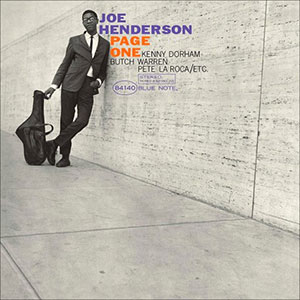
Blue Bossa is a good song for beginners to improvise over chord changes because it is usually played at a medium tempo and has an easy-to-follow harmony (including a modulation). Blue Bossa is often played at jams, so it’s a good idea to add it to your repertoire.
Besides The Girl From Ipanema, Blue Bossa must be the most popular bossa nova song ever.
Recommended listening:
- Joe Henderson – Page One (1963)
- Dexter Gordon – Biting the Apple (1976)
- Joe Pass & J.J. Johnson – We’ll Be Together Again (1988)
- Pat Martino – Comin’ and Goin’ (1999)
- Jimmy Rosenberg – Trio (2004)
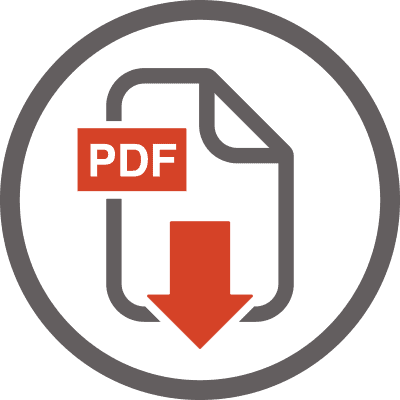
Free Blue Bossa PDF
Enter your first name & email address below and you will get the sheet music/guitar tabs of this lesson as a PDF in your mailbox...
What You Will Learn in this Blue Bossa Lesson
Blue Bossa Video 1 – Single-Note Melody and Solo
Blue Bossa Guitar Pro File (Melody & Solo)
Blue Bossa Band in a Box File (Chord Melody & Solo)![]()
Blue Bossa – Melody
Backing Track (195 bpm)
Listen & Play-Along

Blue Bossa – Chord Analysis
Before we go on to the solo, let’s first have a look at the harmonic structure and the guitar scales you can use over Blue Bossa.
Structure: 16 bars long
Key: C minor
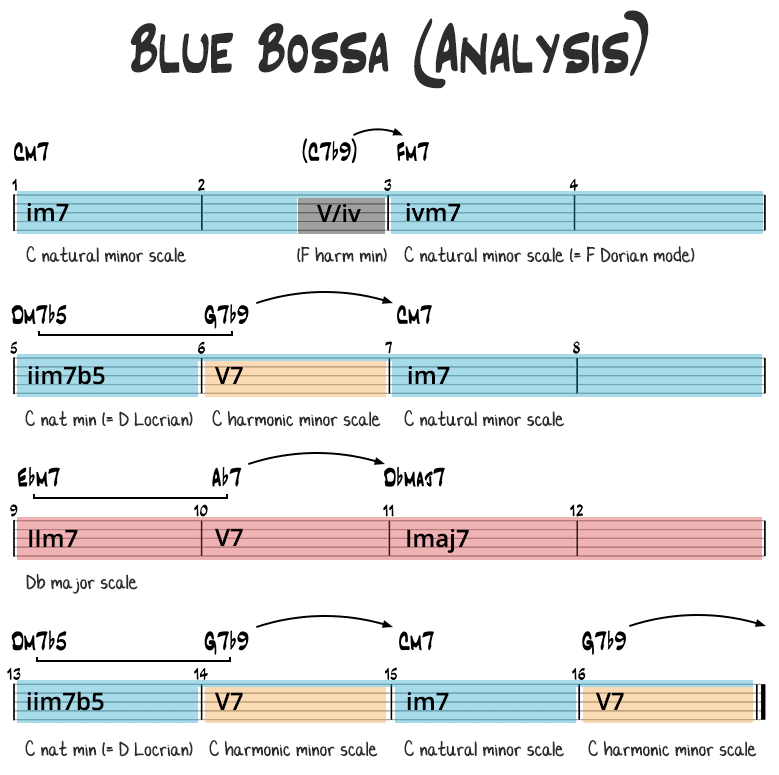
C Natural Minor Scale (Measures 1-8 and 13-16)
On the blue parts, you use the C natural minor scale, aka the C Aeolian mode.

As an alternative, you can use the C minor pentatonic scale or the C minor blues scale.
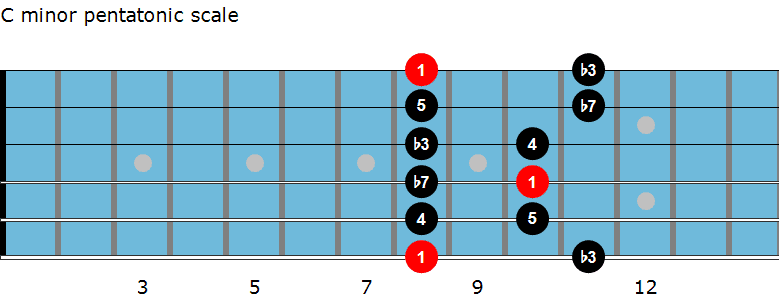
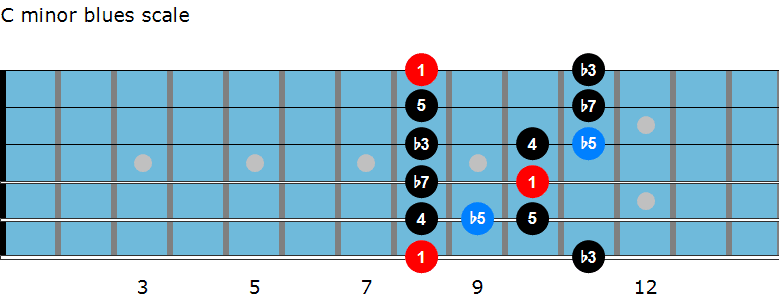
On the Cm7 chord, you can also play the C Dorian mode.
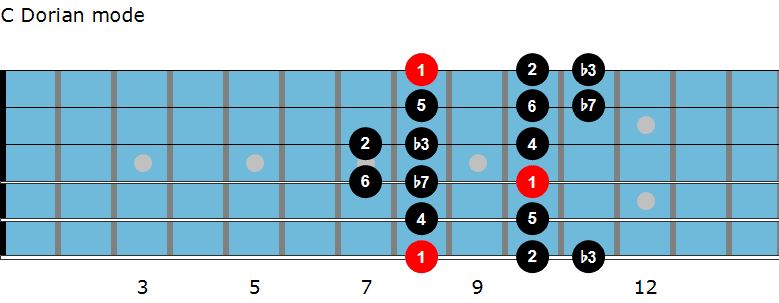
F Harmonic Minor Scale (Measure 2)
As an optional variation, you can make bar 2 into a C dominant 7th chord, by playing the F harmonic minor scale.
C7 (in Blue Bossa) is a secondary dominant chord (V/iv) that resolves to Fm7.
A secondary dominant is a dominant chord that resolves to any chord that is not the tonic (I).
The scale of choice to play over C7 is the F harmonic minor scale, also known as the C Phrygian dominant scale or the C Mixolydian b9 b13 scale.
| F harmonic minor scale | F | G | Ab | Bb | C | Db | E |
|---|---|---|---|---|---|---|---|
| Played over C7 | 11 | 5 | b13 | b7 | 1 | b9 | 3 |
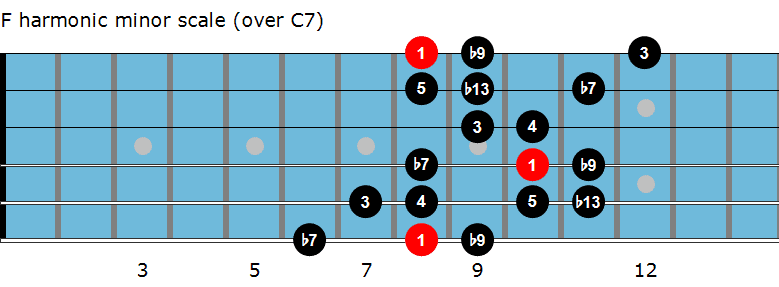
C Harmonic Minor Scale (Measures 6, 14, and 16)
The scale of choice over the dominant chord (G7) is the C harmonic minor scale (= G Phrygian dominant).
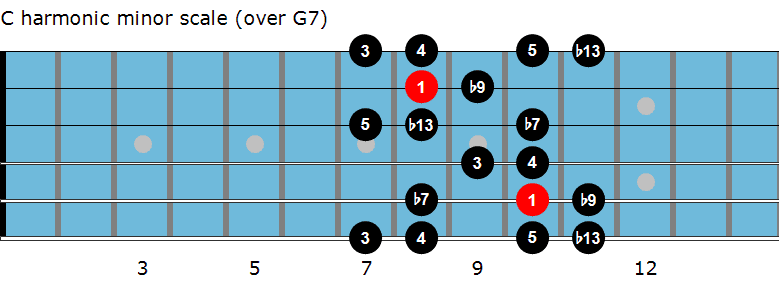
As an alternative, you can play the G altered scale over the G7.

Db Major Scale (Measures 9-12)
Here the chord progression modulates to Db major.
This is a regular II V I progression, and you can play the Db major scale (=Db Ionian mode) over it.
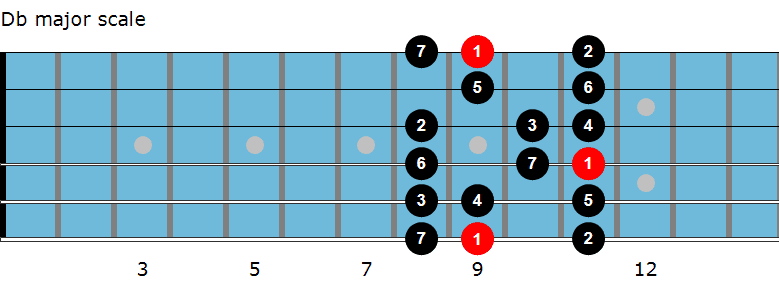
Blue Bossa – Solo Study 1
Backing Track (195 bpm)
Listen & Play-Along
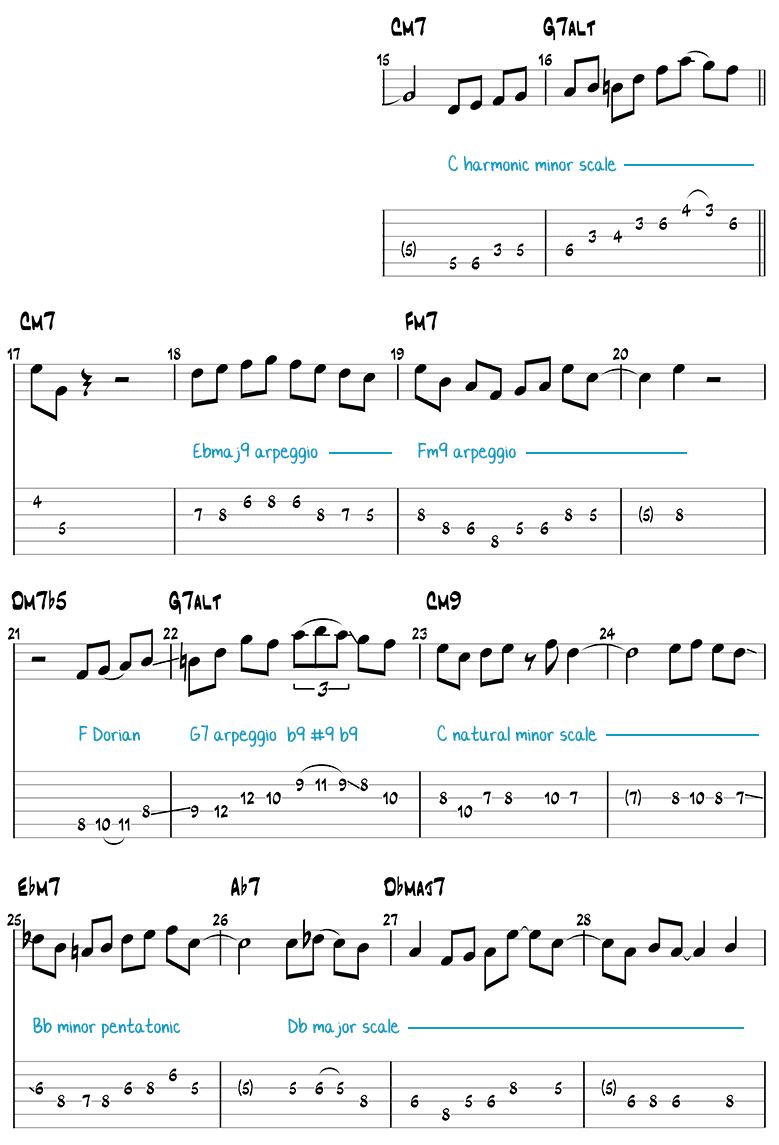

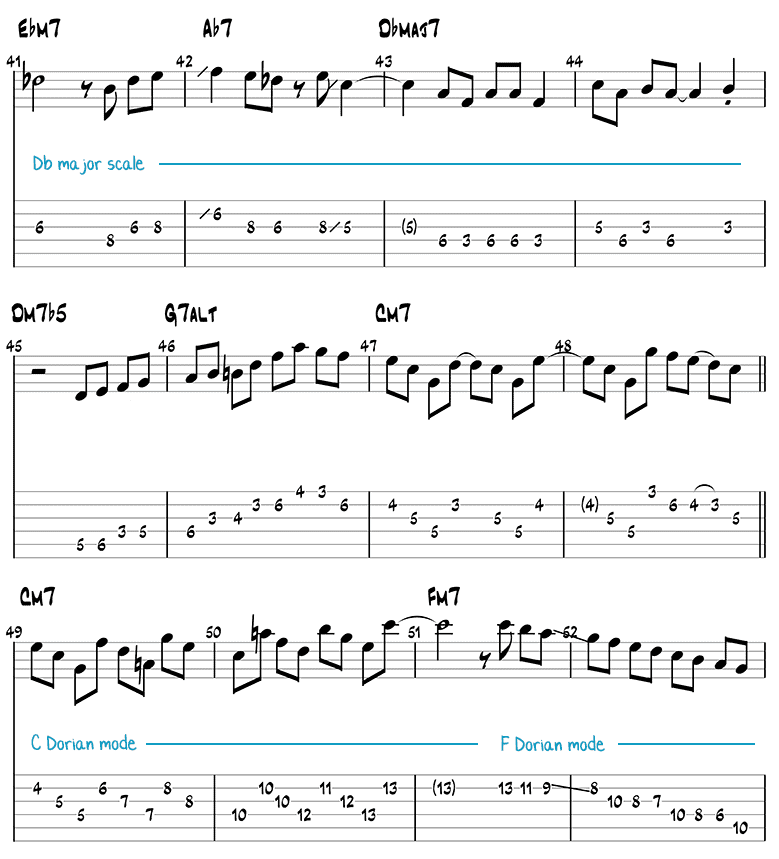
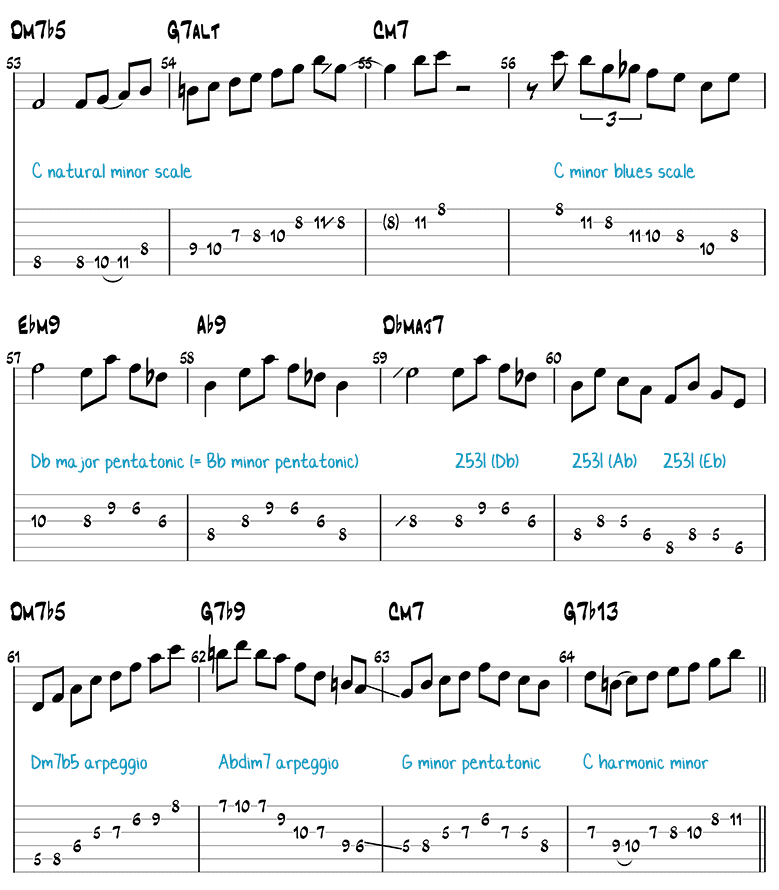
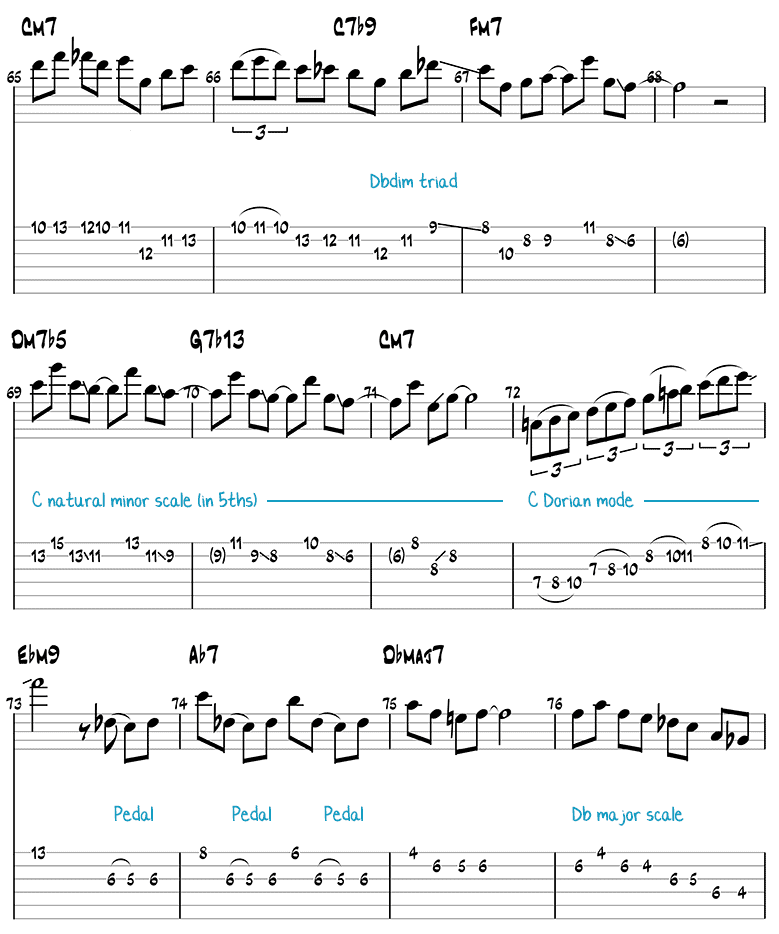
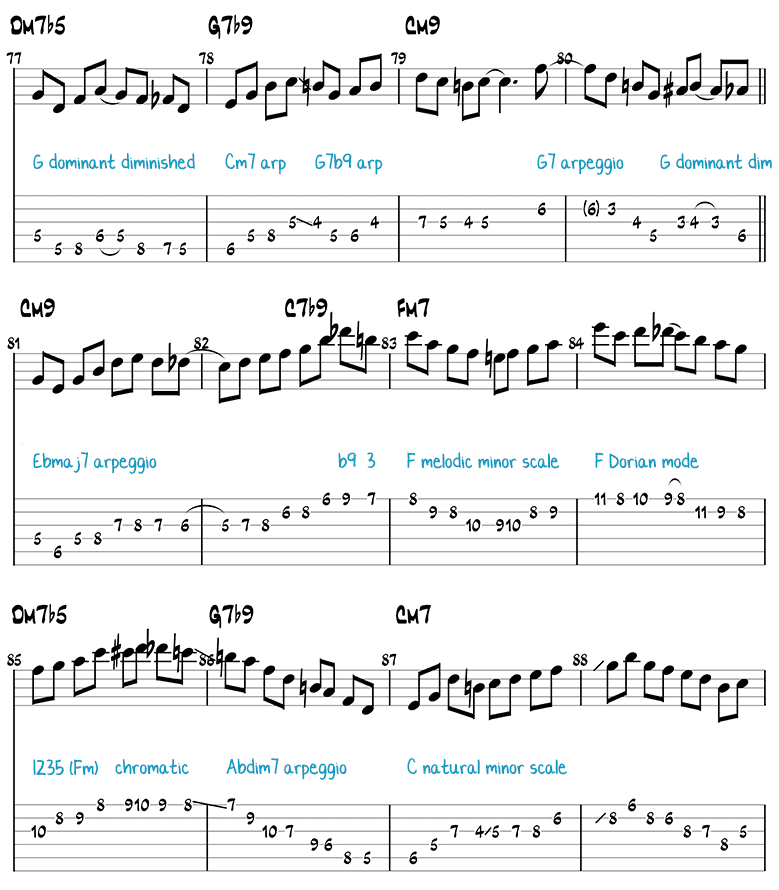
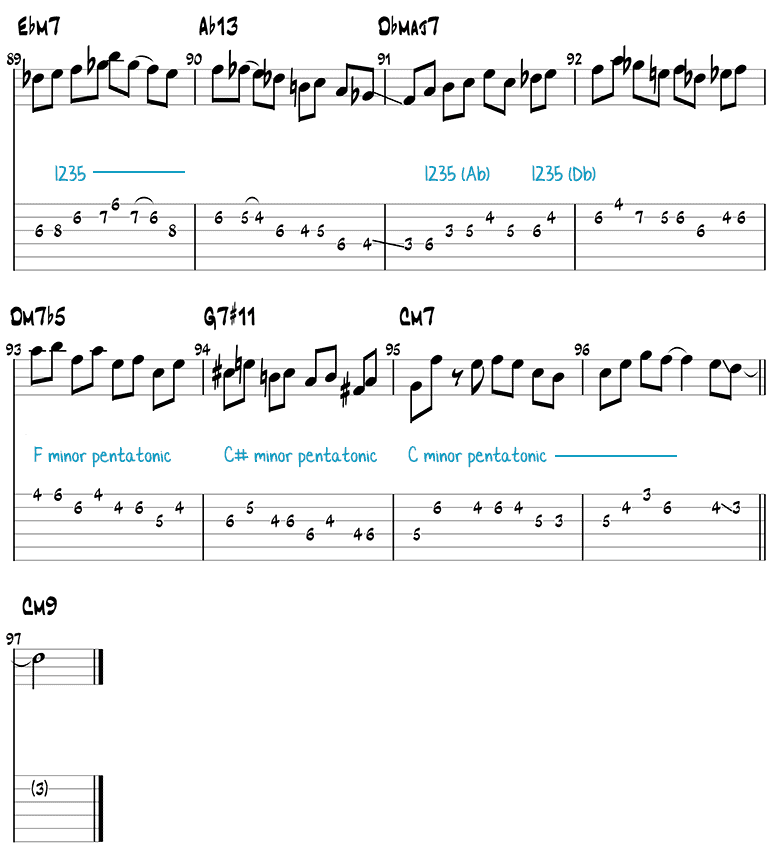
Blue Bossa Video 2 – Chord Melody and Easy Solo
Blue Bossa Guitar Pro File (Chord Melody & Solo)![]()
Blue Bossa Band in a Box File (Chord Melody & Solo)![]()
Blue Bossa – Intro & Chord Melody Theme
In this version of Blue Bossa, I arranged the melody the way you would play it in a jazz trio by adding chords to the melody.
When you play in a combo without a piano or another guitar player, it’s a good idea to harmonize your melodies.
Backing Track (155 bpm)
Listen & Play-Along
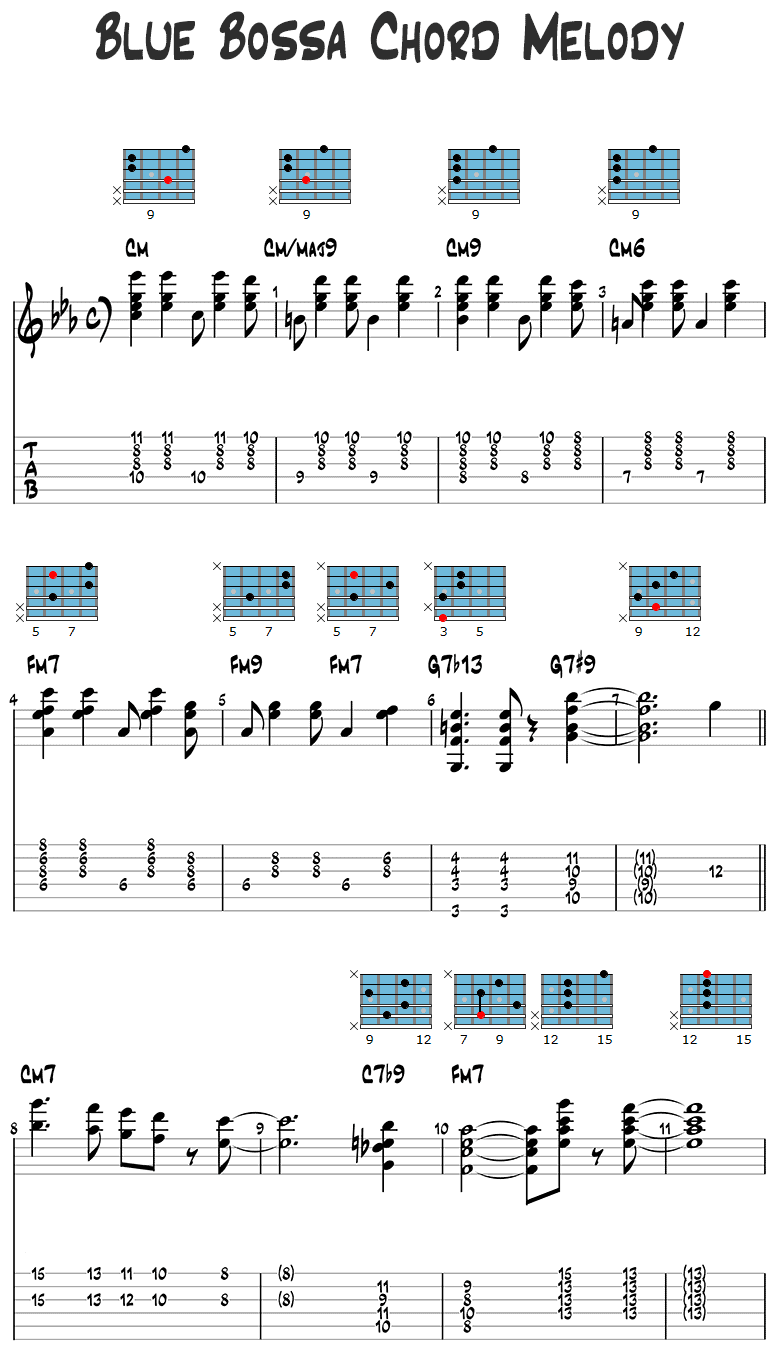
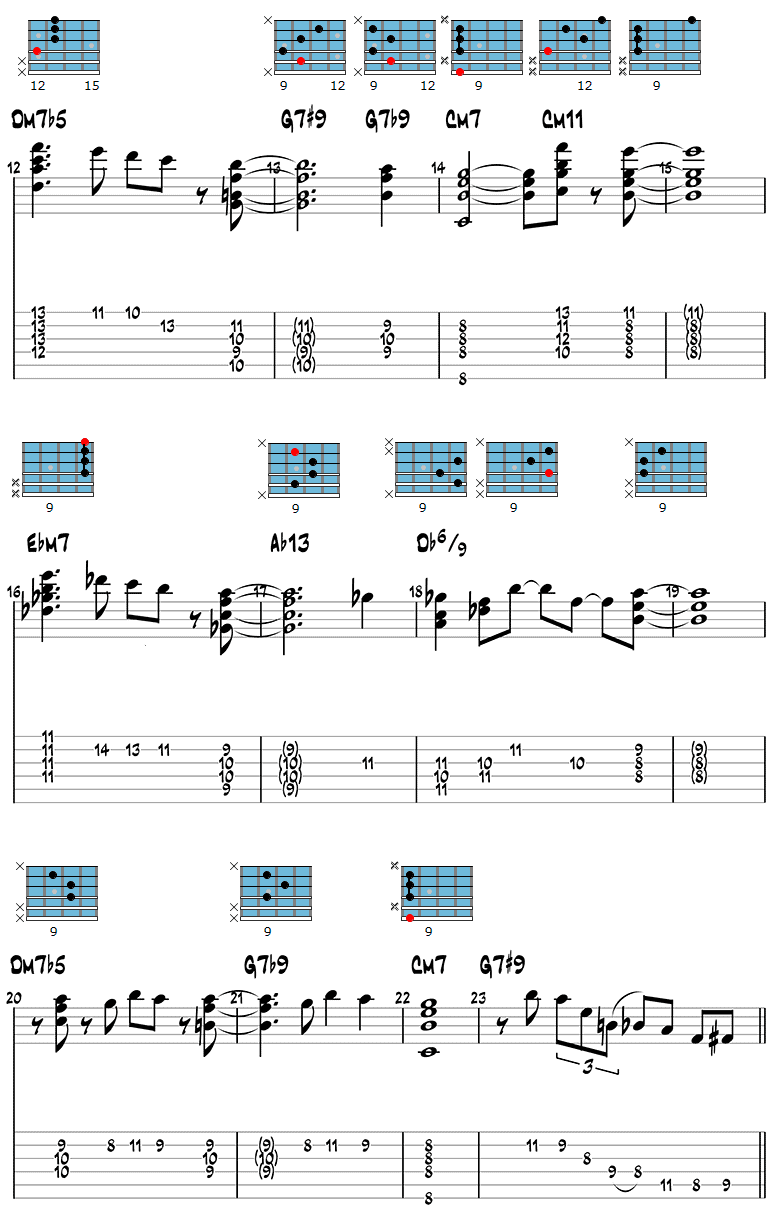
Blue Bossa – Solo Study #2
Backing Track (155 bpm)
Listen & Play-Along
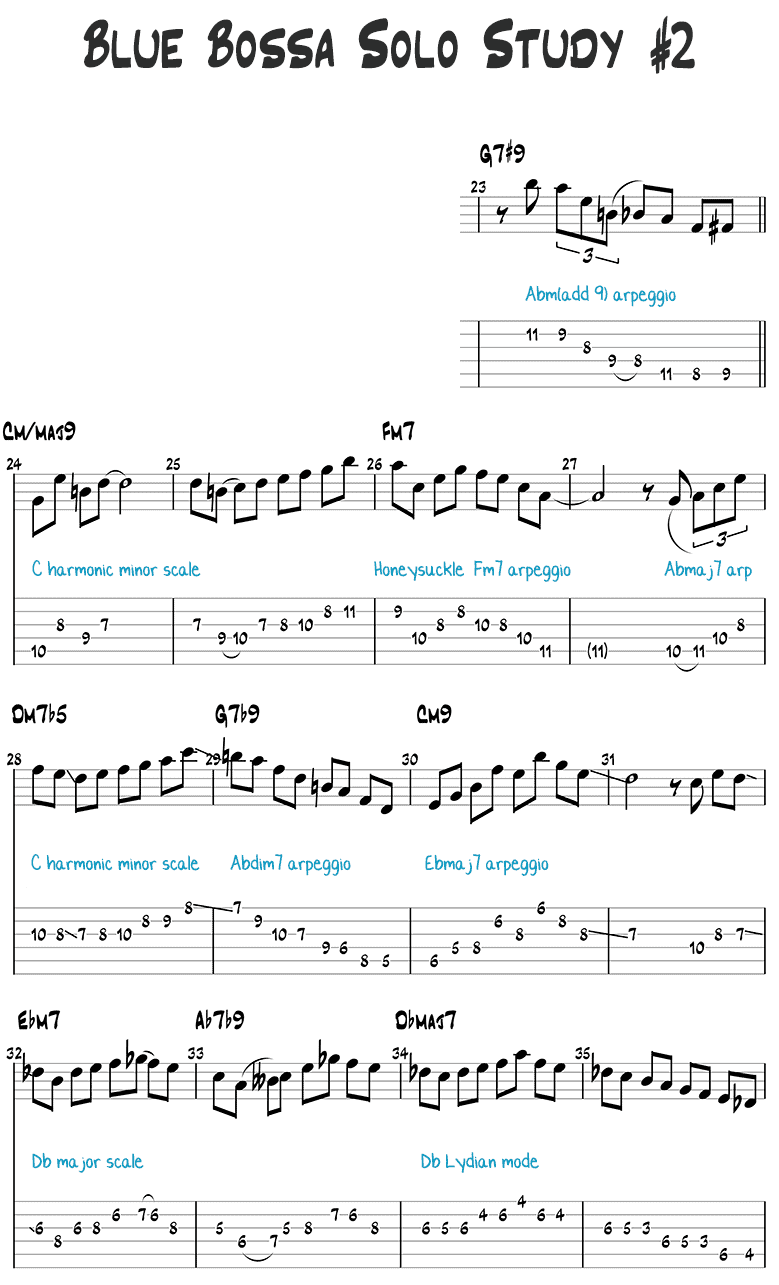
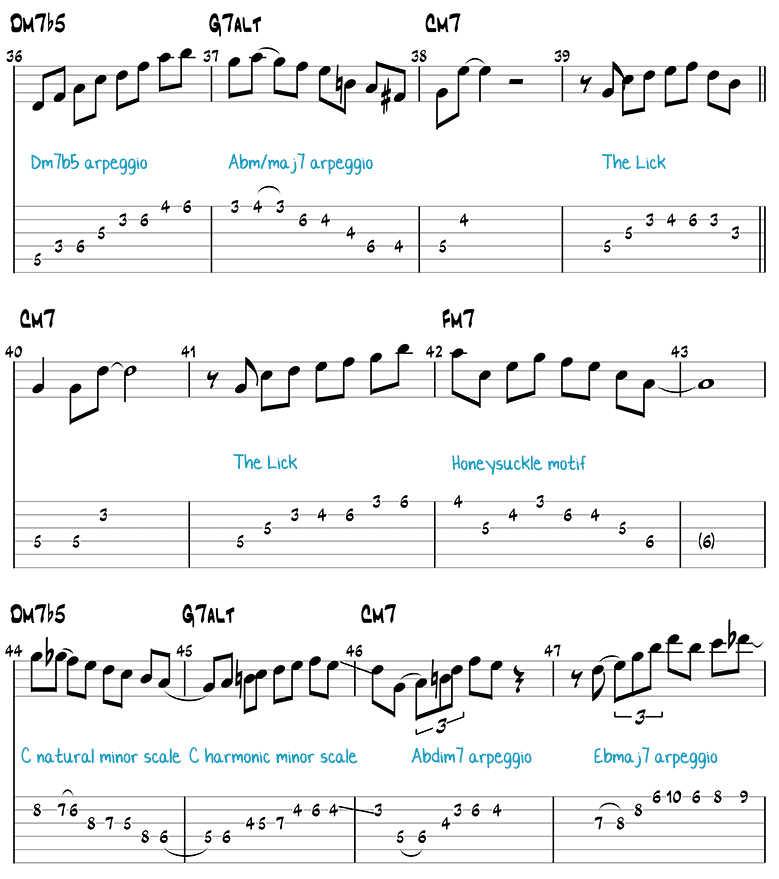
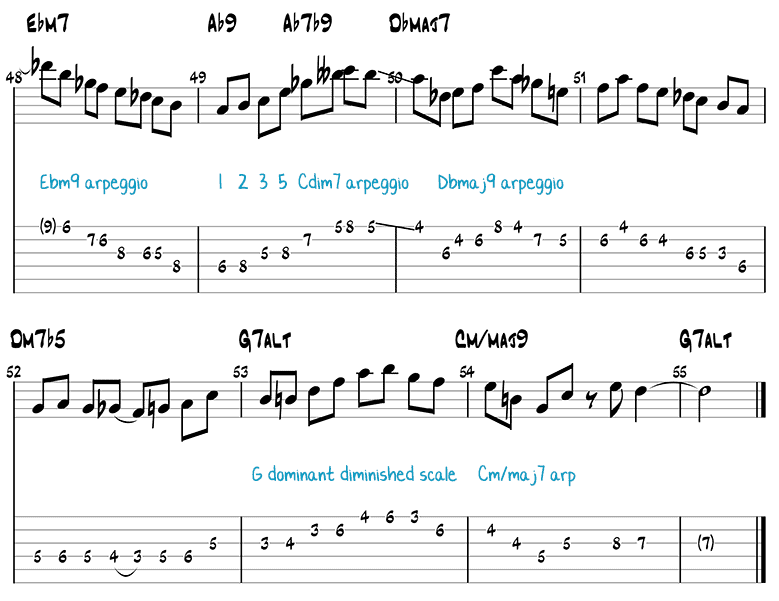
Blue Bossa – Arpeggio Study 1
Arpeggios are an important tool for jazz musicians because they enable you to mirror the harmony of a tune in your solo, something that’s harder to achieve with scales.
The best way to learn arpeggios is:
- Memorize the shapes for all chord types in all positions.
- Play them over chord changes in one position without stopping (in continuous 8th notes). This forces you to come out of your comfort zone because you’ll end up in places on the guitar neck that you’re not very familiar with.
- Do this in all positions.
The following arpeggio study over Blue Bossa will help you on your way. I play the arpeggios continuously up and down the strings and stay in one position.
Here’s how you use the study:
- First, memorize the arpeggio shapes of Blue Bossa (see below).
- Play the study a couple of times.
- Now try the exercise without the sheet music.
- Try starting on another note of the chord. I begin the study on the root of Cm7, but try starting on any other chord tone.
- When you know this position well, go to another position and do the same. Try starting on the C of the 6th string for example.
These studies are not meant to sound good, but they are a good way to master arpeggios so you can use them in a more creative and musical way in your solos.
Blue Bossa Arpeggio Shapes
Here are the arpeggio shapes used in this study:
Cm7
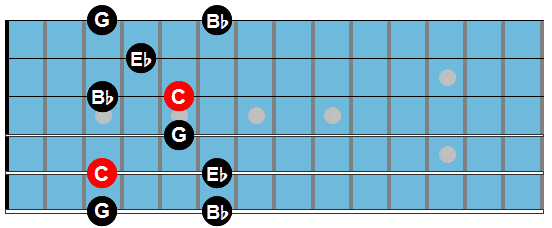
Fm7
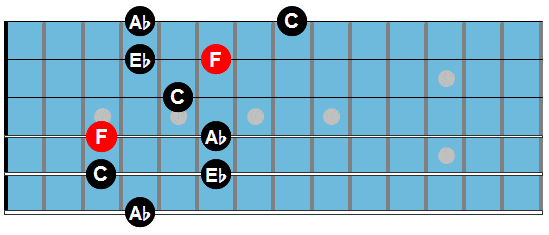
Dm7b5

G7
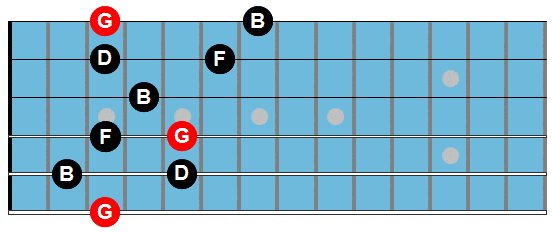
Ebm7
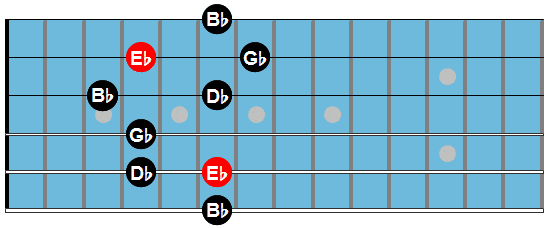
Ab7
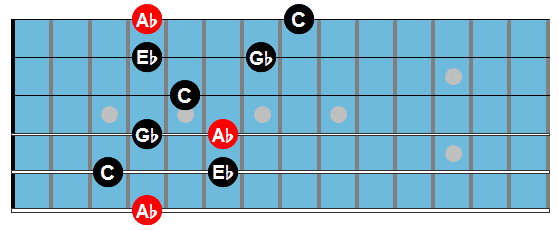
Dbmaj7
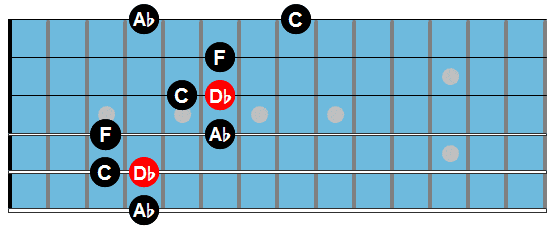
Listen & Play Along
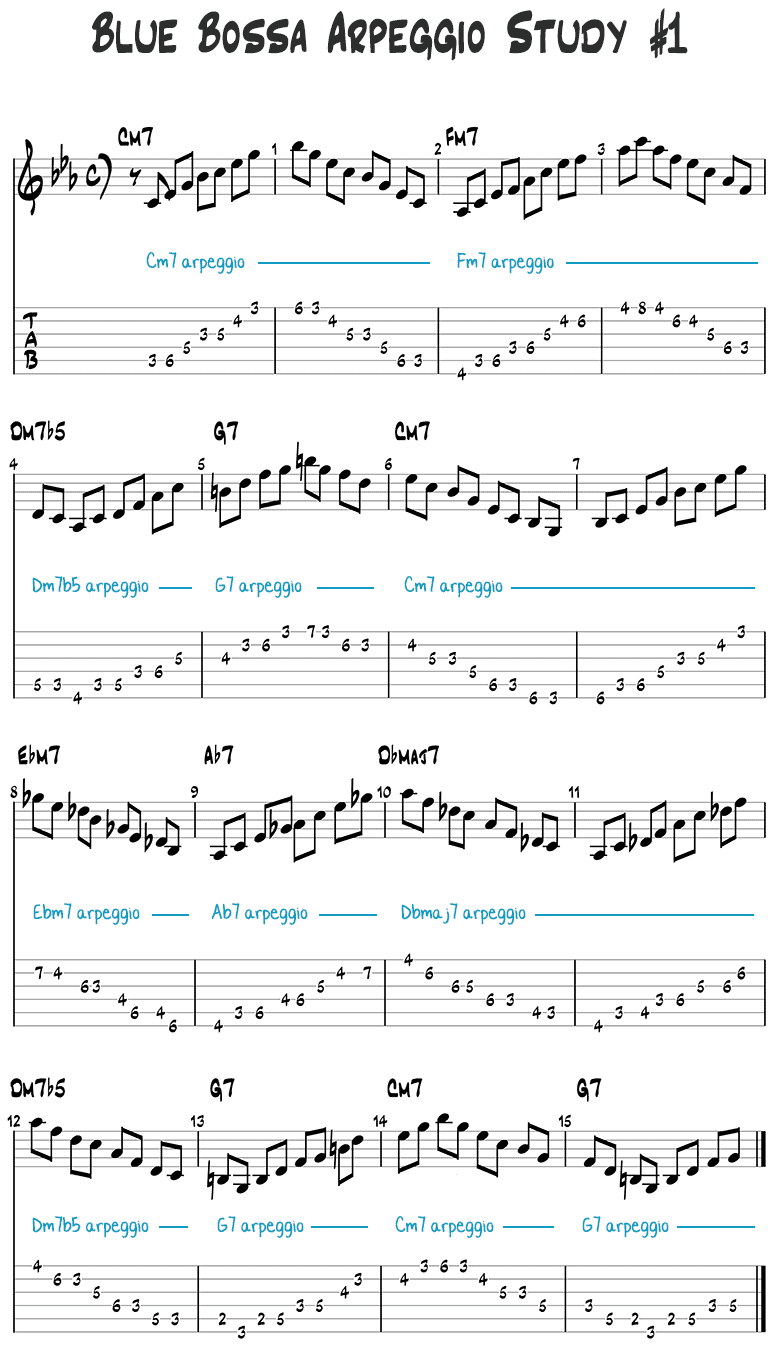
Blue Bossa Arpeggios 1 Guitar Pro File![]()
Blue Bossa – Arpeggio Study 2
In study 2 we add the first extension to every chord (the 9) by using chord substitutions.
Here’s how this substitution works:
- You know that chords are built by stacking triads. For example, a Cmaj7 chord is built with the notes C E G B
- Instead of stopping at the 7, we can add more thirds. In the case of Cmaj7, we can add a third on top of the B, the D.
- The result is a Cmaj9 chord: C E G B D
- Now you omit the root of that chord. These notes are left: E G B D, the notes of Em7.
- Instead of playing a Cmaj7 arpeggio over Cmaj7, you will now play an Em7 arpeggio over Cmaj7.
Playing an Em7 arpeggio over Cmaj7 gives you the major 9 sound:
| Em7 Arpeggio | E | G | B | D |
|---|---|---|---|---|
| Played over Cmaj7 | 3 | 5 | 7 | 9 |
Playing substitutions gives you a richer sound compared to playing the vanilla arpeggios, something that is almost always desirable. Make yourself accustomed to playing chord substitutions instead of the plain chords.
Blue Bossa Arpeggio Substitutions
Here are the substitutions for Blue Bossa’s chords:
Cm7: Ebmaj7

Fm7: Abmaj7

Dm7b5: here we play the plain chord for now.
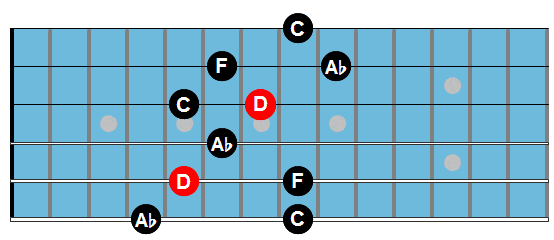
G7: Bdim7
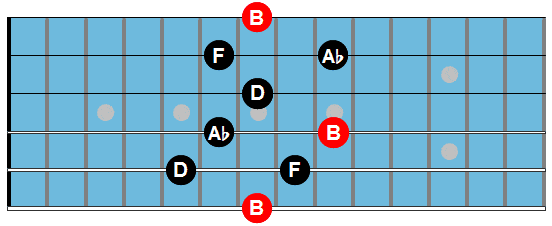
Ebm7: Gbmaj7
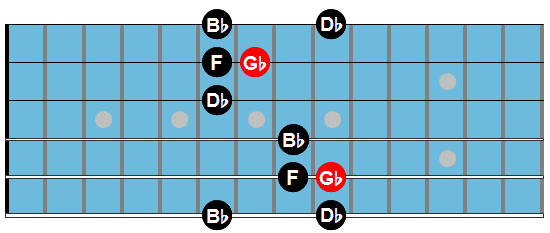
Ab7: Cm7b5
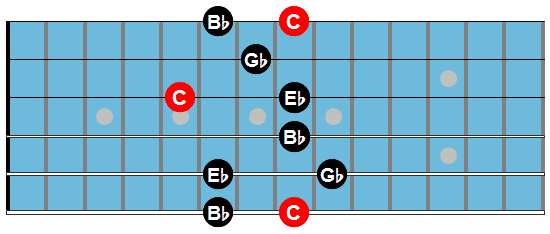
Dbmaj7: Fm7
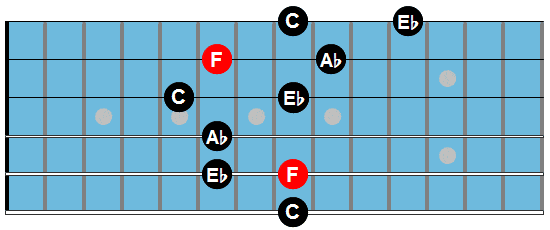
Listen & Play Along

Blue Bossa Arpeggios 2 Guitar Pro File![]()
Blue Bossa – Backing Track Video (130 BPM)
To practice improvising over Blue Bossa, you can use the following “Karaoke-style” backing track video, made with Band in a Box.
Related Lesson: Blue Bossa Guitar Chords



Incredible resource and as others have said remarkable provision and so brilliantly produced. Feel a little less guilty as I have bought a course from you!
thank you so much!
how is this website free? the information is exceptional
Merci de nous faire partager tout ce savoir.
I am most grateful to you for this wonderful lesson Dirk – you are a Star Sir!
Hi Dirk,
Is it possible to download all the mp3 examples as a set/en bloc please?
Brilliant lesson – great clarity. Thank you.
David
Hello Dirk ! Thank you so much for the great job you are doing in this site.
Be careful though not to write CM7 (CMajor 7) when you mean Cm7 (C-7). It’s only a question of letter but it can be confusing for beginners.
I wish you the best
Placidino
Thank you Dirk
Very much appreciate and grateful for your invaluable lesson.
Agree on what was said in regard to the CM7 and Cm7.
Hope to come across some more of your lessons
Hoi Dirk, weer een mooi arrangement en solo. Mag ik vragen of je een effect gebruikt voor je geluid. Is mooi en helder. Ik probeer dat geluid ook te krijgen.
Gr. Herman
Dag Herman, ik gebruik geen effecten buiten een reverb (Strymon Flint). Als gitaar gebruik ik een Gibson ES-175 van 1973 en een Fender Tone Masters Twin Reverb. Grtjs!
Dank je voor je antwoord. Ikzelf heb ook een ES175. Uit 1975. Gebruik ik met een Polytone. Vind het geluid soms te schel. Blijf verder experimenteren.
Groetjes,
Herman Pijnenburg
Even if this were not a lesson that is a great solo – phrasing, tone, variation!
Time for you to release an album of your own.
Thanks for the kind feedback Paul!
What a fantastic job ! Thank you so much for your generosity in sharing this knowledge. Infinite respect for what your are doing with this website.
Thanks Dirk! Love your work!!
Muito obrigado professor Dirk! Espero por mais materiais assim.
Thank you for this lesson.
One of my favorites and one of the major standards to study.
I’m looking forward to working on the arps, my current focus. The chord studies, which I know best, are fun to jam along with. I’d like to see even more ideas for the comping, with vocalist, trio, keyboard combos in mind.
Also, have you done Wave? Another great Jobim standard. Many artists, such as Romero Lumbambo, love to impro on it. So rich.
Bravo. Fantastic job!!!
Dirk: Great lesson, much appreciated! I’ve always enjoyed this tune!
I’ve checked out a few different Jazz Guitar courses in the last few years and Dirks approach is the best I’ve come across yet. Great stuff!!
Thanks Adam!
Wow fantastic lesson man. I love you playing style it’s so smooth
So much to glean from just one song, one arrangement. I spent weeks learning and perfecting technique because your lesson was so well conceived. Well done Dirk.
Super!! Merci beaucoup !!!!
Excellent work. Many thanks
ottimi, veramente utile e ben fatto … grazie !!!
Amazing!!! Thank you very myuch!!
Wow this is such a great lesson!!! Thanks Dirk! Will you be doing more like this?
Thank you Dirk ! You did a wonderful job presenting this tune into a step-by-step arrangement. Top notch approach for guitarists with ambitions for proficiency !
Grande Lição Musical !!!! Grande Dirk Laukens !!!!! Fantastic !! Admiravel Demais !!!!
Wow! Great lesson. I already knew (I thought I knew…) this standard but you open so many improvisation options. Thank you so much
Hi, thanks for this, very nice solo too, I will be stealing a lot from it particularly for the B where I get stuck sometime
Interesante el toque personal a la interpretación y excelente el solo.Felicitaciones maestro
Amazing, thank you🙏👍😊
WOW, more like this to come…? WOW…! Thank You
Brilliant high quality lesson. Thanks.
Thank you very much for this class of high quality, didactic, rich and wonderful content. Congratulations. I will enjoy this study a lot. Big hug from the South of Brazil, from the city of Porto Alegre-RS.
Thank you so much for sharing your knowledge and passion for jazz. I am new to this style and greatly appreciate what you give . Thank you from Australia.
This is great work, thanks a lot for publishing!
Excellent lesson, excellent playing
Very nice, thank you!
Great idea the pdf, I prefer to read on paper…
Ben fatto…
A very nice tune and an excellent class, thank you very much.
super. merci beaucoup
Excelente trabajo. Muchas gracias maestro.
Hi! Thank you for sending me the free ebook, I really like it and I am very happy so please send me more and by the way do you have the solo of Lately of George Benson?
Hello, I found the harmonic analysis with the chords and the scales that can be used very helpful. Thanks.
Is it possible to get this lesson as a pdf so I can print it out? Thank you for the wonderful lesson either way.
Hey Mike, there’s a “Print & PDF” button at the bottom of the lesson. Cheers!
Thank you again for another well structured, great looking and helpful lesson!
While reading and listening to the playalongs I remembered having written some words to the melody many years ago, so I’d like to contribute these to the community in case someone’s looking for an alternative to already existing lyrics of the wonderful “Blue Bossa”.
Blue Bossa
The colours of my heart speak silently
One of them will talk as pain to me
Yellow, red and green supposedly are true
But everything I can see is blue
The colours of my heart speak silently
Blue’s become the word for pain to see
If you sent a sign I would be there you
If your love once for all was true
Music by Kenny Dorham/ these words by Michael Koschorreck, GEMA
Thank you for the music!
Wonderful!
All great suggestions but I think that you should add that people should learn to sing the melody and bass line.
Excellent lesson breakdown…thanks
Complete lesson…thanks
Fantastic Dirk! I’ll add this to my recently purchased Sunny and Take Five study guides. Your study guides are incredible. U and Matt deserve the Grammy for jazz instruction! Many thanks!
Great lesson!!!
Thx a lot.
Thank you for the nice chord comping lessons.They have really helped solidify my chord vocabulary,song structure and melodic chord phrasing.Thanks again!:)
I love it , 2 months ago I had a performance and this one was in the repertoire . first day learning all the chords seemed difficult to me but gradually after practicing I could play it without looking at the paper 🙂
Great lesson and comments on Brazilian styling
Thanks for this – filled in some questions I’d had for years.
Many thanks for sharing. I am still not in this league of players yet but the simpleness of your notes furnishes me with the encouragement I need to plod on
Reminds me of “Girl from Ipanema”.
This was a fun and relatively easy lesson for me after recently having gone through the Carlos Arana bossa nova study book….a very good foundational to intermediate level book with CD examples,music and tabs. The best I’ve found of the several I own.
The chord change in Blue Bossa from Fm7 to Dm7b5 is so subtle and sweet…and typical of the style. Please keep it coming. Thanks.
At a time when there’s a daily stampede to get into your email inbox with all kinds of stuff, I’ve got to say that your tips/lessons have been really good, refreshing and helpful. Thank you for taking the time to share your craft and gift with many. May the gift of giving grant you the life of your dreams,daily. Keep Jammin’